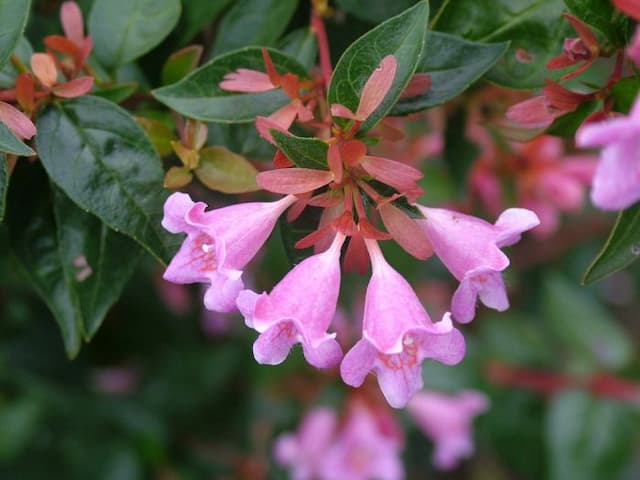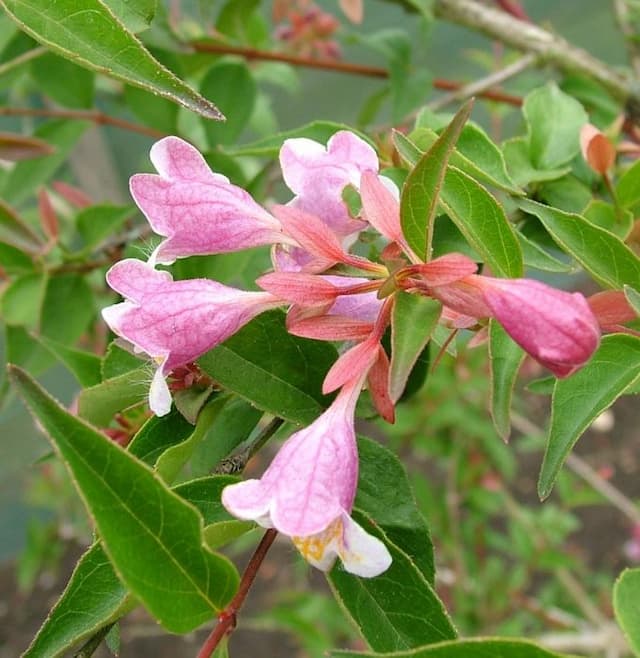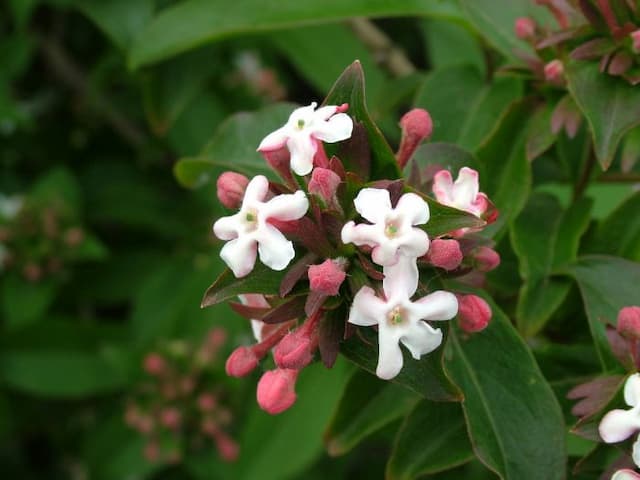Golden Lace Patrinia scabiosifolia

ABOUT
The plant known commonly as Scabious-leaved Patrinia features a distinctive appearance with a clump-forming habit. It has narrow, lance-shaped leaves which resemble those of a Scabious and can give rise to its common name. These leaves are often mid-green in color and form a basal rosette at the base of the plant. During its blooming period, it produces ample, branched clusters of tiny, star-shaped yellow flowers that stand out for their light color and delicate form. These flower clusters are often airy and can add a sense of lightness to the plant's overall appearance. The stems of Patrinia scabiosifolia are typically upright, supporting the floral display prominently above the foliage. Overall, its striking yellow flowers and fine-textured leaves give it a soft yet cheerful presence in any garden setting.
About this plant
 Names
NamesFamily
Valerianaceae
Synonyms
Scabious Patrinia, Golden Lace
Common names
Patrinia sibirica, Patrinia villosa.
 Toxicity
ToxicityTo humans
Patrinia scabiosifolia, commonly known as patrinia, does not have widespread documentation as a toxic plant to humans. There is limited information on its toxicity and it is not typically considered a common poisonous plant. However, as with any plant, individual reactions can vary, and it's possible for some people to experience an allergic reaction or gastrointestinal discomfort if they ingest parts of the plant. In the absence of conclusive data on its toxicity, it is always advisable to exercise caution and keep plants away from children who may inadvertently ingest them.
To pets
Patrinia scabiosifolia, or patrinia, is not well-documented as a toxic plant to pets either. There’s limited information regarding its effects on animals if ingested. While there are no specific symptoms of poisoning commonly associated with patrinia, pet owners should always be careful with plants around pets, especially those with unknown toxicity. If a pet does ingest patrinia and displays signs of illness, such as vomiting, diarrhea, or unusual behavior, it is important to consult a veterinarian.
 Characteristics
CharacteristicsLife cycle
Perennials
Foliage type
Deciduous
Color of leaves
Green
Flower color
Yellow
Height
2-3 feet (60-90 cm)
Spread
2 feet (60 cm)
Plant type
Herb
Hardiness zones
5
Native area
Asia
Benefits
 General Benefits
General Benefits- Ornamental Value: Patrinia scabiosifolia, commonly known as Golden Lace, has striking yellow flowers that add aesthetic value to gardens and landscapes.
- Pollinator Attraction: The plant is known to attract bees, butterflies, and other pollinating insects, supporting biodiversity.
- Erosion Control: Due to its sturdy root system, Golden Lace can help stabilize soil and prevent erosion on slopes or in areas prone to degradation.
- Drought Resistance: Once established, it is relatively drought-tolerant, making it useful in xeriscaping and in regions with water scarcity.
- Low Maintenance: Golden Lace typically requires minimal care once established, making it a convenient choice for gardeners of all skill levels.
- Deer Resistance: Patrinia scabiosifolia is not a preferred food source for deer, reducing the likelihood of damage in areas with large deer populations.
 Medical Properties
Medical Properties- Anti-inflammatory: Patrinia scabiosifolia has been traditionally used to reduce inflammation and swelling.
- Antitumor activity: Extracts from the plant have shown potential antitumor effects in various research studies.
- Antimicrobial: The plant possesses antimicrobial properties, which could be useful in preventing or treating infections.
- Hepatoprotective: It is believed to have liver-protective effects, possibly aiding in treating liver conditions.
- Immune system modulation: Compounds in the plant may have an impact on the immune system, possibly enhancing its function.
- Antioxidant: Patrinia scabiosifolia is known to contain antioxidant compounds, which help in neutralizing harmful free radicals in the body.
 Air-purifying Qualities
Air-purifying QualitiesThis plant is not specifically known for air purifying qualities.
 Other Uses
Other Uses- Garden ornamental: Patrinia scabiosifolia, commonly known as golden lace, is often used in gardens for its aesthetic appeal due to its bright yellow flowers and tall, upright growth habit.
- Cut flowers: The golden lace's attractive blooms make it a good choice for cut flower arrangements, providing a natural and rustic look.
- Traditional dye: In some regions, the golden lace may be used as a natural dye source, offering a range of yellow shades to textiles.
- Companion planting: Golden lace can be used in companion planting to attract beneficial insects such as bees and butterflies, thanks to its abundant nectar-rich flowers.
- Ecosystem support: It serves as a food source for various insects, thus playing a role in the support of ecosystem biodiversity.
- Soil stabilization: Due to its expansive root system, golden lace can be utilized for soil erosion control in certain landscapes.
- Privacy screens: When planted in mass, golden lace can create semi-transparent privacy screens in gardens or along borders.
- Wildlife garden: It can be included in wildlife gardens to provide habitat and food for insects and birds.
- Seasonal interest: Golden lace adds seasonal interest to gardens, especially in late summer and early autumn when many other plants are no longer in bloom.
- Education: The plant can be used in educational settings such as schools or botanical gardens to teach about plant biology and pollination.
Interesting Facts
 Feng Shui
Feng ShuiPatrinia scabiosifolia is not used in Feng Shui practice.
 Zodiac Sign Compitability
Zodiac Sign CompitabilityPatrinia scabiosifolia is not used in astrology practice.
 Plant Symbolism
Plant Symbolism- Rarity: Patrinia scabiosifolia, commonly known as golden lace, is relatively rare in cultivation, symbolizing the unique and uncommon aspects of life or characteristics in a person.
- Elegance: With its delicate, lace-like flowers, golden lace represents sophistication and grace.
- Transience: As a perennial with a relatively short bloom time, golden lace can symbolize the fleeting nature of beauty and life's ephemeral moments.
- Lightness: The airy nature of the plant's flowers suggests lightness and an uplifting spirit, embodying a sense of freedom and relief from burdens.
- Brightness: The bright yellow color of its flowers is often associated with joy, happiness, and positive energy.
 Water
WaterGolden Lace should be watered regularly, ensuring the soil is kept consistently moist but not waterlogged. During the growing season, water approximately once a week, providing about one to two gallons per watering session for an established plant in the ground, depending on soil type and weather conditions. Reduce watering frequency in the fall and further in winter to prevent excess moisture from causing root rot during cooler months. Always check the top inch of soil for dryness before watering again.
 Light
LightGolden Lace thrives in full sun to partial shade. The ideal location for this plant is in a garden spot where it receives at least six hours of sunlight daily but is sheltered from the intense midday sun, especially in hotter climates.
 Temperature
TemperatureGolden Lace can endure a wide range of temperatures, but it grows best in conditions between 60 and 75 degrees Fahrenheit. This plant can survive temperatures as low as 30 degrees Fahrenheit but should be protected from prolonged freezes. The maximum temperature should not exceed 90 degrees Fahrenheit to avoid heat stress and to keep the plant healthy.
 Pruning
PruningGolden Lace should be pruned to remove dead or faded flowers to encourage new growth and to maintain a desirable shape. The best time for pruning is immediately after blooming, which typically occurs in late summer or early fall. Pruning can be done annually or as needed to control the size of the plant.
 Cleaning
CleaningAs needed
 Soil
SoilGolden lace needs well-drained soil with a pH of 5.5 to 7.0. A mix of loam, compost, and sand in equal parts creates ideal conditions for its growth. Ensure regular organic matter enrichment to maintain fertility.
 Repotting
RepottingGolden lace does not require frequent repotting. It is typically repotted only if it outgrows its container or the soil is depleted, which might happen every 2-3 years.
 Humidity & Misting
Humidity & MistingGolden lace thrives in moderate humidity levels but is quite adaptable and does not require specific humidity conditions for growth.
 Suitable locations
Suitable locationsIndoor
Provide bright indirect light and well-drained soil.
Outdoor
Plant in sun to light shade, enriched well-drained soil.
Hardiness zone
4-8 USDA
 Life cycle
Life cyclePatrinia scabiosifolia, commonly known as Scabious Patrinia, begins its life cycle as a seed, typically germinating in the spring when temperatures become favorable. Upon germination, it develops into a rosette of basal leaves during its first year, focusing on accumulating energy and establishing a strong root system. In its second year, Scabious Patrinia sends up a flower stalk, and by summer, it produces clusters of small, five-petaled, yellow flowers that attract various pollinators. Once pollinated, these flowers give way to fruit capsules containing seeds. After seed set, the plant completes its life cycle by dying off, usually behaving as a biennial, meaning that its life cycle spans over two growing seasons. The seeds overwinter and germinate the following spring to restart the cycle.
 Propogation
PropogationPropogation time
Spring to summer
Propogation: Patrinia scabiosifolia, commonly known as Golden Lace, is often propagated through division, which is typically done in early spring or fall. The most popular method is dividing the root ball. To do this, dig up the entire plant, being careful not to damage the root system. Wash or shake off excess soil to better see the root structure. Identify natural divisions in the root ball and gently pull or cut the roots apart to create new plants, ensuring each new section has a portion of root and shoots. Replant the divisions at the same depth they were originally growing, spacing them about 12 inches (approximately 30 centimeters) apart to allow room for growth. Water the new plantings thoroughly to help establish them.







![Himalayan honeysuckle [Golden Lanterns]](/_next/image?url=https%3A%2F%2Fplants-admin.emdemapps.com%2Fimages%2Fplants%2F%2Fimages%2F604b55302cc87.png&w=640&q=75)

